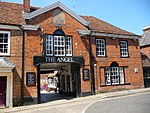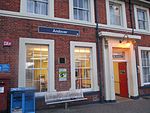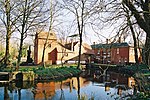Andover College (Hampshire)
Andover, HampshireFurther education colleges in HampshireHampshire school stubsUnited Kingdom university stubsUse British English from February 2023

Andover College, formerly known as Cricklade College, is a Further Education community college in Andover, Hampshire, England. It provides a range of academic and vocational courses to school leavers, adults, employers and the wider local community. Previously known as Cricklade College, the College changed its name following a merger with Sparsholt College Hampshire in 2007, forming one of the largest colleges in Hampshire. Andover College is a campus of Sparsholt College Hampshire.
Excerpt from the Wikipedia article Andover College (Hampshire) (License: CC BY-SA 3.0, Authors, Images).Andover College (Hampshire)
Charlton Road, Test Valley Saxon Fields
Geographical coordinates (GPS) Address Nearby Places Show on map
Geographical coordinates (GPS)
| Latitude | Longitude |
|---|---|
| N 51.21078 ° | E -1.48184 ° |
Address
Andover College - PPB (Professions Practical Building)
Charlton Road
SP10 1DH Test Valley, Saxon Fields
England, United Kingdom
Open on Google Maps









